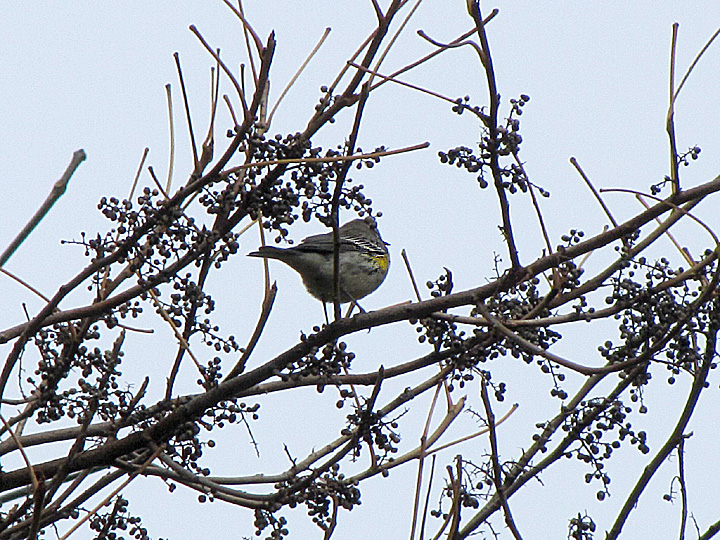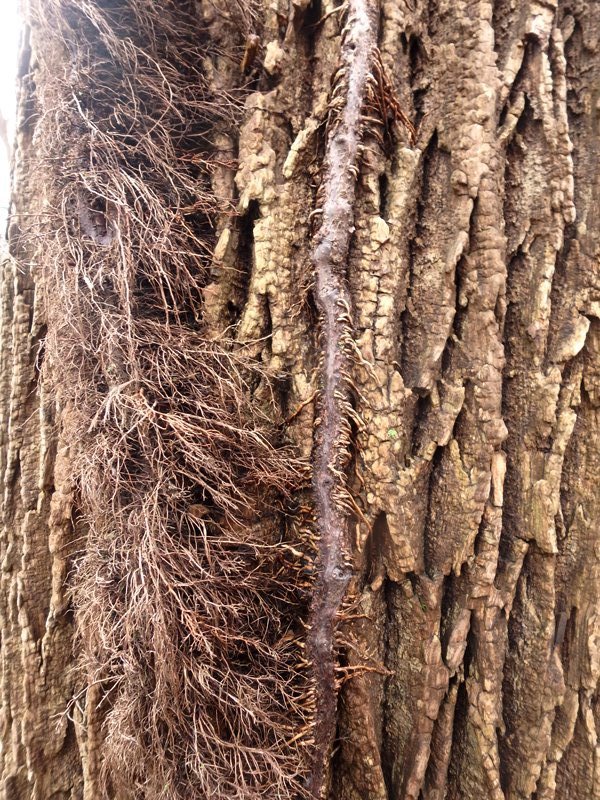Mariton: Poison Ivy and Virginia Creeper
by Tim Burris, Preserve Manager
A lady on one of my walks asked me to do a Field Note on winter identification of Poison Ivy versus Virginia Creeper. It was a great request and I recently came across a Tuliptree with both species growing side by side. Both Poison Ivy and Virginia Creeper are native plants in Pennsylvania. So, they have their place and purpose to the overall biodiversity of our forests.

Poison Ivy on left. Virginia Creeper on right.
Poison Ivy (Toxicodendron radicans) is a hairy vine when it grows on trees. The vine on the left is characteristic of that growth. The hairs look like small roots. While vines are most common at Mariton, there are places where it also grows as a low, creeping ground cover. (I will add that Poison Ivy can also be an upright stem growing up to three feet tall. I usually see the upright growth in clay soils that are often damp.) That is a good reason to stay on trails. Even in the winter oil from the stems can get on clothing or pet fur. When you touch those items you could get the oil on your skin and have the allergic reaction. Poison Ivy has the characteristic leaf with three leaflets, but sometimes those leaves aren’t evident on vines at eye level.

A Yellow-rumped Warbler in Poison Ivy berries. Photo by Carole Mebus.
I totally understand why someone who is extremely allergic to Poison Ivy wants to remove it from their property. I will, however, put in this plug for this native plant. It produces a lot of white berries that are important for wildlife, especially at the end of a long winter. I’ve watched everything from Bluebirds to Woodpeckers, and Squirrels to Deer eating the berries.

Virgina Creeper vine on the right.
Virginia Creeper (Parthenocisis quinquefolia) has brown ”feelers” coming off of the vine. But in Virginia Creeper, they tend to grow only along the side of the vine. These feelers help the vine attach to the tree and can be even more dense than this photo. Virginia Creeper has five leaflets per leaf. It produces blue berries that are also an important wildlife food. The berries are small and can look like wild grapes, but don’t eat them. These are two native vines that can look similar until you study them more closely.
